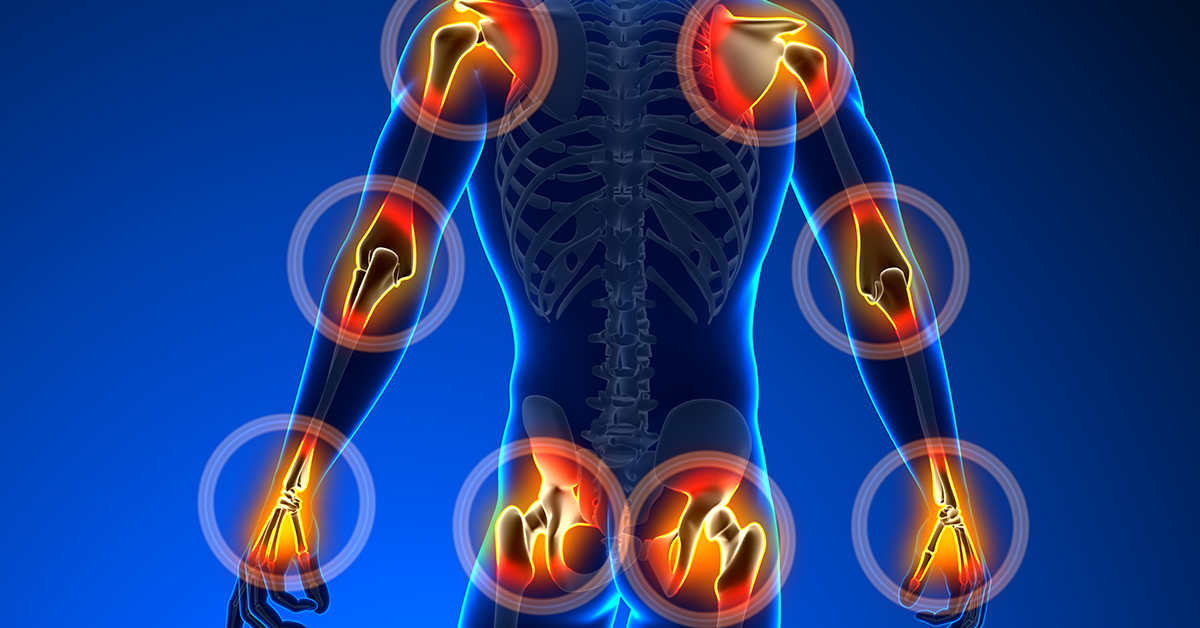Arthritis: inflammation in a joint; causes pain, stiffness, swelling, limited movement. There are a variety of causes.

What is Arthritis?
Arthritis is inflammation of one or more joints. This inflammation results in pain, stiffness, swelling, and limited movement. It is one of the most common causes of disability in the United States. Millions of people are affected by this disorder. Although there are more than one hundred types of arthritis, the most common types are osteoarthritis and rheumatoid arthritis.
What causes Arthritis?
Arthritis occurs due to the breakdown of cartilage. Cartilage protects the joint and allows smooth movement. It also absorbs shock when pressure is placed on the joint. Without the sufficient amount of cartilage, the bones rub together. As a result pain, swelling, and stiffness occurs.
Arthritis may occur due to a variety of other reasons:
- Infection caused by bacteria or virus
- Normal wear and tear of the bones with age
- An autoimmune disease (the body's immune system attacks joints and causes inflammation)
- Joint injury or broken bones
Symptoms and Diagnosis
The common symptoms of arthritis involve the joints. There are many signs and symptoms of arthritis depending on different types of arthritis. Some of the common symptoms include:
- Pain in joints
- Stiffness (usually in the morning or after periods of inactivity)
- Reduced range of movement
- Redness of the skin
- Warmth around the joint
- Joint swelling
During the diagnosis, first of all the doctor takes a detailed medical history to see if the arthritis or another musculoskeletal problem is the likely cause of the symptoms. Then, depending on the type of arthritis suspected, the doctor may suggest some of the following tests.
The analysis of different body fluids can help to pinpoint the type of arthritis the patient may have. Fluids commonly analyzed include blood, urine and joint fluid.
X-rays, CT scans, MRI and ultrasound are also used to diagnose arthritis. These imaging tests can detect problems within the joint that may be causing the symptoms.
In a few cases, the doctor may look for damage in the joint by inserting a small, flexible tube (known as arthroscope) through an incision near the affected joint. The arthroscope shows images from inside the joint on a video screen.
Treatment
The choice of treatment will depend on a number of factors. The cause of disease, the severity of inflammation, which joints are affected, and how the condition affects the daily activities of patient are all considered before choosing the treatment.
The medications used to treat arthritis include analgesics, Nonsteroidal Anti-Inflammatory Drugs (NSAIDs), Counterirritants, Disease-modifying antirheumatic drugs (DMARDs), and Corticosteroids.
Physical therapy can be beneficial for some types of arthritis. Certain exercises can improve the range of motion and strengthen the muscles surrounding the joints. In some of the cases, splints or braces are also suggested by the doctors.
If conservative measures fail to help, the doctor may advise surgery. Joint replacement and joint fusion are the two types of surgeries available for treating arthritis.
